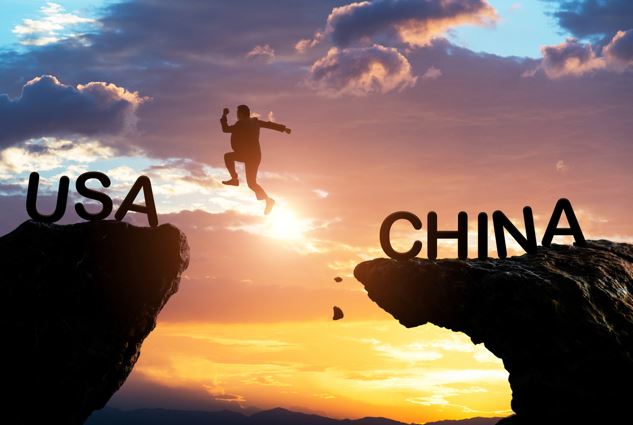Highlights :
- After benefiting from lower solar costs thanks to Chinese manufacturing, there is a global pushback now against China’s dominance.
- This pushback can only be successful with higher solar costs, which will be balanced against the higher ‘energy security’ this provides to the countries involved.

Close on the heels of the European Solar Manufacturing Council (ESMC) virtually putting up its hands on the future of solar manufacturers in the continent comes news of US senators urging the Biden Administration to take action against ‘cheap” Chinese imports as well. The same Chinese imports have actually made solar more accessible and viable due to their low prices.
In a letter addressed to the President, senators Jon Ossoff, Sherrod Brown, Marco Rubio and Reverend Raphael Warnock have demanded tariff increases on imports of Chinese modules, cells and wafers, even as existing tariffs under Section 301 of the Trade Act of 1974 are being evaluated under their statutory four-year review. The move comes even as the US has seen a tremendous response to its IRA (Inflation Reduction Act) initiative, which has drawn commitments for over 100 GW of manufacturing in solar space, including from Chinese and India-based manufacturers. The four senators have indicated that existing, as well as future investments planned in the solar manufacturing space, will be at risk with the existing Chinese prices for imports into the US.
“China’s aggressive subsidies for its own solar manufacturing industry demonstrate its intent to control the industry globally,” wrote the senators. “By 2026, China will have enough capacity to meet annual global demand for the next ten years. This capacity is an existential threat to the US solar industry and American energy security.”
The senators cited a Wood Mackenzie report that estimated China’s solar production costs had fallen 42% in the last year to US$0.15 per watt, which is almost 60% below the price of made-in-the-US panels. In Europe, the ESMC has already said that the whole European solar supply chain will collapse at these costs, leaving the hopes of building out 30GW of local manufacturing in tatters.
Other Markets Also Want More Of the Solar Pie
The moves in these two key export markets for China come even as the third big market. India has already been at work, hoping to shore up solar manufacturing to a level where it is a strong number 2 to China. However, the incentives under IRA have been so massive that India’s own PLI scheme for solar manufacturing has been dwarfed by it. And now, even markets like Saudi Arabia and others in the Middle East, or Australia, are aiming for a level of local manufacturing to cut down ‘dependence’, as well as create more local jobs. While the Middle East region, particularly Saudi Arabia, has used tools like incentives and local content requirements to participate in projects, in Australia, plans are afoot to build local manufacturing as well.
In Australia, even as the first of new module manufacturing lines from firms like 5B and Tindo (which has proposed a 1.2 GW module manufacturing line) come online, a study backed by Australian renewable agency ARENA, done by the Australian PV Institute (APVI) and others claims that establishing manufacturing capability of 10GW of poly-silicon – the first stage of the solar manufacturing cycle where China is most dominant, is possible in Australia. It adds that a further 5GW across the other steps of the value chain – ingots/wafers, solar cells and solar panels – is “credible and feasible” with the right government policy support. Interestingly, it does not insist on making all parts of the value chain, leaving the possibility of importing cheaper high-quality modules when global prices crash, perhaps.
China’s Reaction
Chinese majors that have led the solar boom in the past decade have reacted to increased demand domestically and globally by ramping up capacities massively, some say beyond sustainable levels. As the letter by the US senators says, “By 2026, China will have enough capacity to meet annual global demand for the next ten years”. While technically true, it is also true that the largest Chinese majors are no longer happy with the drop in module prices and anticipate a high probability of lower capacity utilization by the end of the year. Driven not by export market restrictions but by disruptions in the domestic supply chain caused by firms failing to survive the current intense competition.
The biggest have also sought to hedge bets by outsourcing plants outside China, from South East Asia to the US, Brazil and even Europe. But these have been mostly module manufacturing operations or tracker plants, not the other critical parts of the supply chain like cell, wafer, and polysilicon manufacturing.
Most experts believe that the Chinese government will seek to protect its carefully nurtured solar dominance by every means available to it, including restrictions on technology transfer for manufacturing, another area where China-based firms dominate. In time, even China may not mind shifting a larger part of its manufacturing, particularly modules closer to consuming markets, in a bigger way to manage the pushback.
Conclusion
With very high political capital invested in incentivizing solar manufacturing worldwide, it would be too early to expect a demise of solar manufacturing in Europe for now. But it is also a fact that with existing technologies, perhaps India is the only market that seems sustainable in the long term, even as we assume Chinese costs will eventually resume an upward push driven by higher local incomes and more. India will be helped by a large domestic market and low manufacturing costs, although it will need to worry about high energy costs with higher automation.
Other markets might do well to pick up specific parts of the solar chain, be it polysilicon in Australia, more solar glass in India, or substitutes for key inputs like silver paste or even the EVA sheets where China dominates as well. In short, it will take a combination of massive innovation outside China and the protection of domestic industry for the solar supply chain to bloom outside that country. All this, even as a hitherto ignored area where China dominates as well with ‘just’ 70% market share, the power electronics side or solar inverters will eventually come into the picture as well, opening up a whole new battleground in a few years.






























